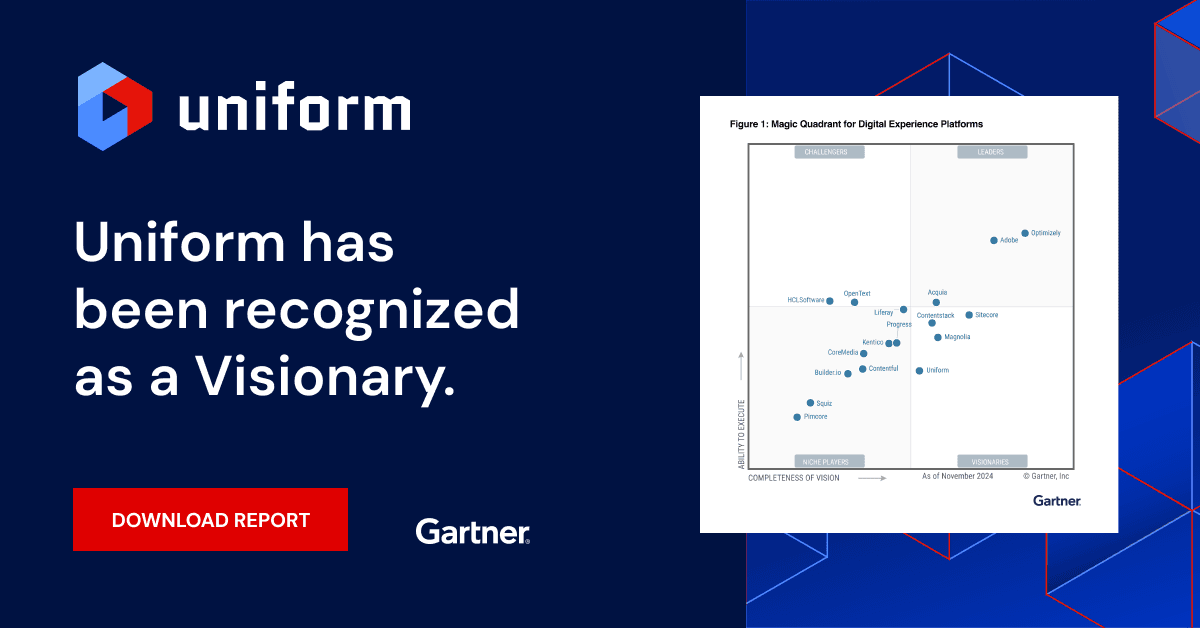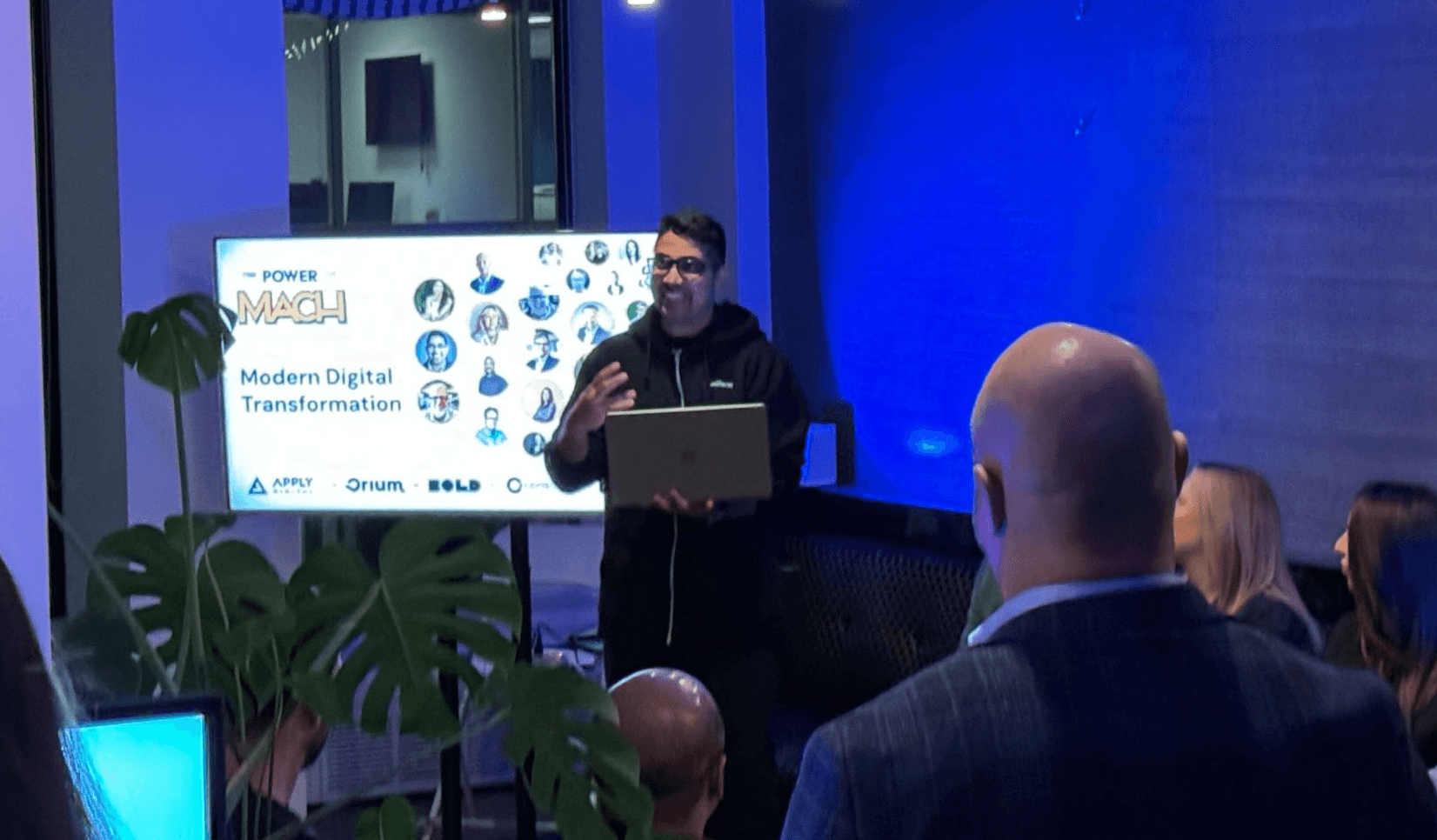Uniform blog/Replatforming your CMS can be easier
Replatforming your CMS can be easier
Replatforming your CMS can be easier
Replatforming, the process of switching your current content management system (CMS) to another product, can be complex and expensive. Organizations want to embrace digital experience (DX) technology to increase ROI, productivity, and performance, but are met with inflexible platforms, runaway costs, and integration challenges.
If you’re in the middle of a replatforming project or considering one, there are purpose-built tools that help minimize the pain of a CMS migration and maximize your existing technology investments.
Let’s examine common challenges that beleaguer replatforming projects and how a digital experience management platform can get your goals back on track.
The problem with replatforming the old way
As technology introduces new and novel ways to manage and deliver digital content, brands are eager to adopt leading CMSs that promise to enhance and streamline omnichannel experiences. After all, it’s hard to stay competitive with a legacy system that’s expensive to maintain and impossible to customize.
And change is exciting. However, many companies quickly discover that replatforming can present major business obstacles, from unsatisfied end users to redundancies in the project that require significant development resources and budget to complete. It can be an arduous path lined with challenges:
- Moving to a new CMS can result in marketers losing the intuitive features and digital production processes they are familiar with and are easy to execute.
- CMS migrations are complicated and involve many moving parts. For example, the implementation phase usually entails months or years of scoping, vendor meetings, engineering work, and retraining of digital teams.
- Replatforming your CMS can drastically slow your speed to market. Typically, brands will only launch the new platform once the migration from the old one is complete. This reallocates resources, which might already be limited, from strategic business initiatives to recreating a solution that already exists.
Without a proper strategy or technological solution, replatforming soon becomes a time-intensive, costly endeavor that disrupts workflows, projects, and teams. In addition, companies must consider another factor, one that makes replatforming even more challenging: a CMS-centric digital experience architecture.
CMS-centric replatforming holds brands back
When replatforming, content-first tech stacks—digital experience architectures that rely on the CMS as the primary system for anchoring experience creation and delivery—pose further obstacles for brands seeking foundational technology that can evolve with their business.
Generally, a digital experience stack contains multiple content and data sources, including a digital asset management (DAM) system, product information management (PIM) platform, search engine, etc. A tremendous amount of custom code is required to connect these tools together and integrate with your front-end system and CMS.
Thus, if you use a CMS to build web pages, but display images from a DAM and product details from the PIM, both your DAM and PIM must be connected to the CMS and, consequently, added to your replatforming project.
Composing a flexible, agile technology stack requires products tailored for integration. But if your CMS dominates the experience creation process, the number of integrations needed to maintain those connections, as well as the cost of replatforming, increase exponentially.
The upside of multisource content management
When laying the roadmap for replatforming, your CMS shouldn’t be the center of your DX architecture. Rather, you need a solution designed for the main architects of digital experiences, i.e., marketers, merchandisers, and other business users.
The visual workspace, an all-in-one digital experience management solution, leverages content across departments, teams, platforms, and channels regardless of source. Marketers create, test, and build campaigns in one visual interface where they can effortlessly pull content from the CMS, DAM, and other connected tools.
In this multisource environment, the CMS functions as just one of numerous platforms involved in the digital experience production process. A single unified platform as the presentation layer provides no-code customization, blending services in the front end and back end through pre-built connectors and eliminating the need for extensive rewiring.
The CMS should be an equal player rather than the sole captain of your technology stack. Adopting a unified workspace makes this relationship possible, enabling you to expand and add new capabilities and test functionality with minimal disruption to existing workflows or the digital experience itself. This simplifies your CMS migration, improves scalability and agility, and reduces implementation costs—a win on all fronts.
Benefits of experience-first replatforming
When you adopt an experience-first approach to replatforming, customer needs and business goals–not technology–guide your brand’s content, design, and technical decisions. With a front-end experience management solution:
- Marketers are empowered to connect and pull from different content sources—even from multiple CMSes—which frees developers from handling page-building and publishing tasks.
- Users responsible for experience creation can create campaigns on a page-by-page or component-by-component basis, which offers greater flexibility and the ability to migrate content incrementally.
- Innovations such as generative AI are incorporated throughout the visual workspace, helping to resolve any content gaps during the migration process.
- Finally, you gain native content management capabilities, an advantage if you’re still evaluating CMS vendors.
To succeed in a replatforming project, you need more than just an experience-first mindset and composable technologies. With its performance optimization layer, a visual workspace bridges your teams, tools, and workflows into one powerful ecosystem that offers pre-built integrations, out-of-the-box CMS capabilities, and vendor-agnostic tools to launch experiences at scale.
A better way to replatform your CMS
The Uniform Visual Workspace provides the foundation for upgrading your CMS without sacrificing speed and performance or your digital team’s budget and sanity. With its flexible components and multisource functionality, brands save time during the replatforming process, leaving room to focus more on innovation and delivering fast, engaging experiences.
Learn how our customers have escaped the replatforming trap while accelerating their speed to market. Contact us for a demo today.





.png&w=1080&q=90)
.png&w=1080&q=90)
.png&w=1080&q=90)